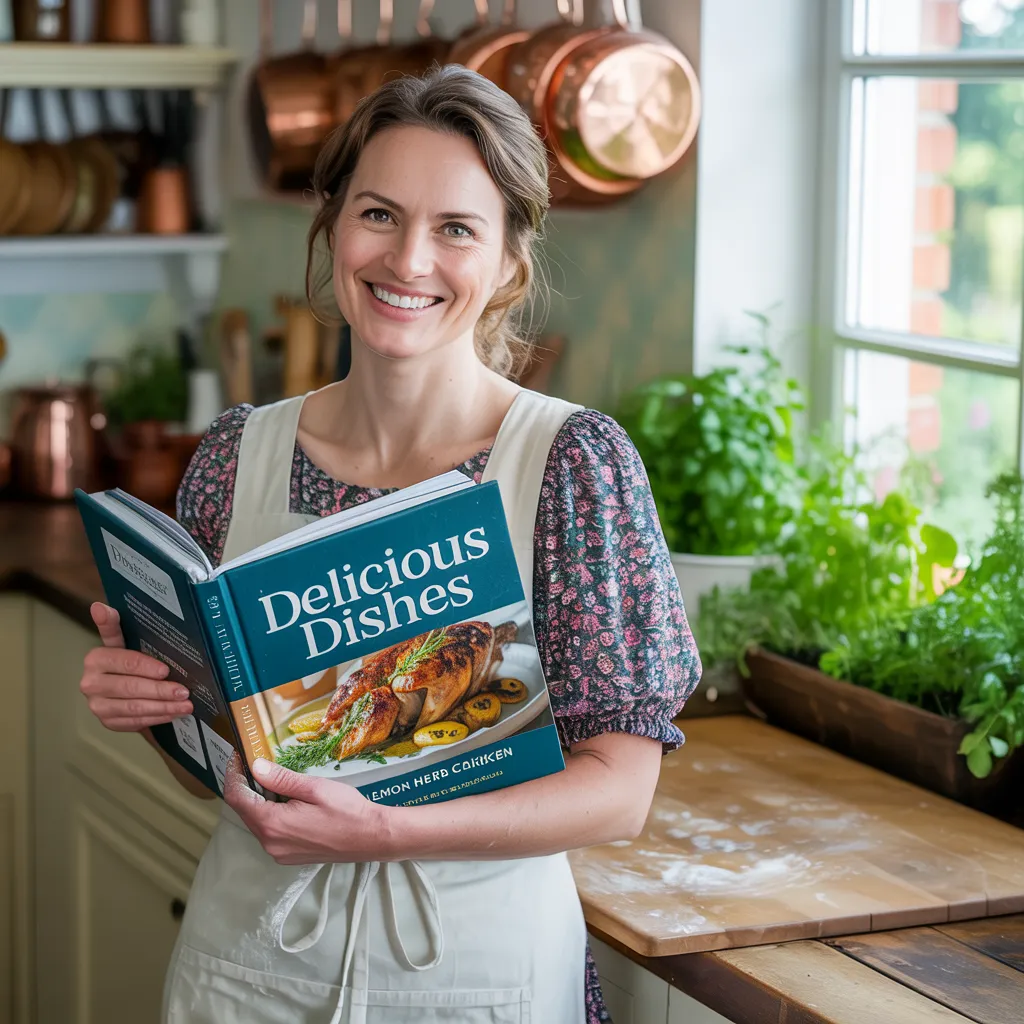
A hearty, spooky beef stew simmered in red wine and beef broth, brimming with tender meat, root vegetables, and served in hollowed bread bowls for a dramatic Halloween centerpiece.
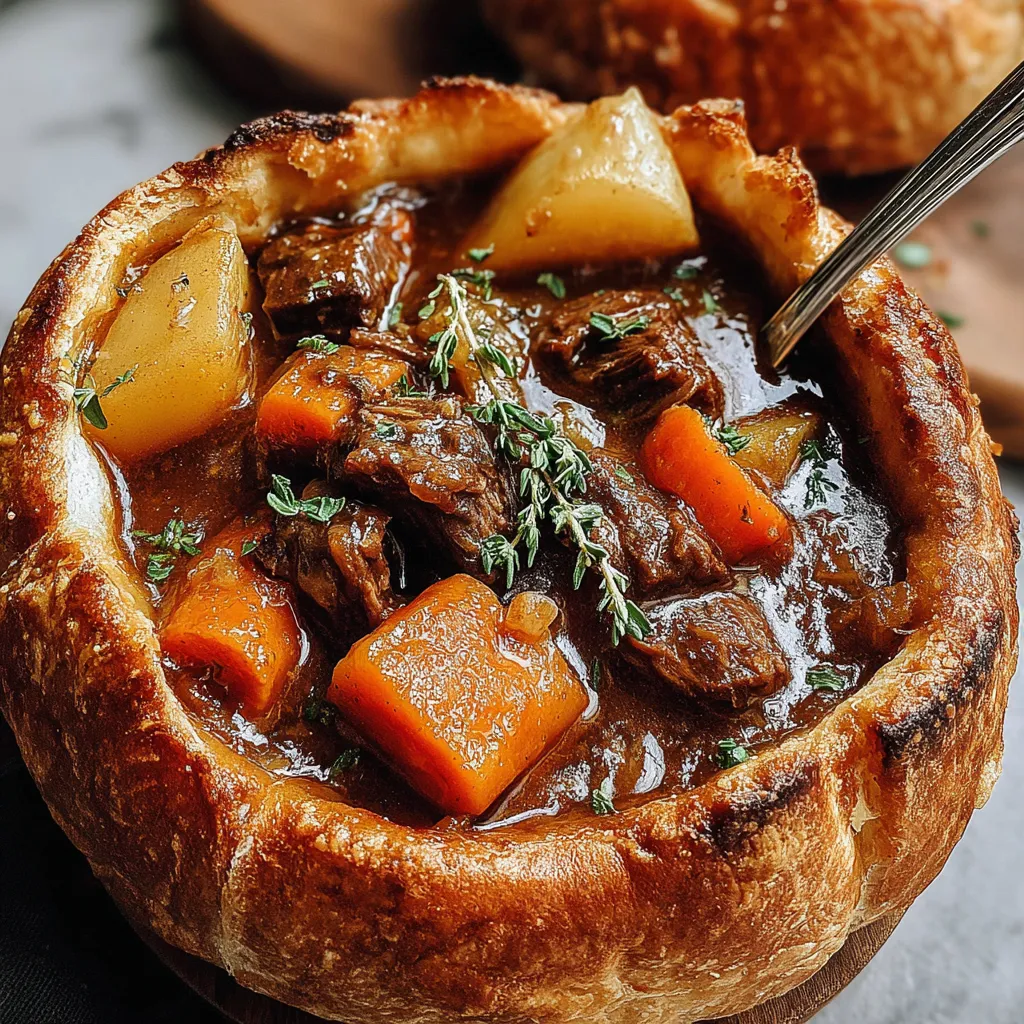
This Witch’s Cauldron Beef Stew is the kind of dish that turns an ordinary evening into a memory. I first developed this version during an autumn when I wanted something both comforting and theatrical for a small Halloween gathering. The recipe grew from a simple weeknight stew into a festive favorite after I started serving it in hollowed-out bread bowls, which gives the pot a true cauldron feel. The first spoonful is rich and savory, with deep beef notes carried by the red wine and tomato paste, while the root vegetables add a natural sweetness and satisfying texture.
I remember the first time I made this for my nieces: they insisted we dim the lights and light a single candle in the middle of the table, which made the bread-bowl cauldrons glow. The meat became fall-apart tender after a long, gentle simmer and absorbed the red wine and herbs in the most comforting way. The carrots and potatoes keep their shape but become silky, soaking up the sauce. This dish is special because it balances rustic comfort with a bit of theatrical presentation — perfect for a cozy family dinner or a Halloween night that calls for something warm and a little spooky.
From my own kitchen tests, the stew holds up well for leftovers. The second-day flavor is often deeper because the wine and tomato paste continue to meld with the beef and vegetables. Family reactions range from delighted surprise at the presentation to a quiet appreciation for the rich, homey flavors — it’s become a requested dish for October dinners at our house.
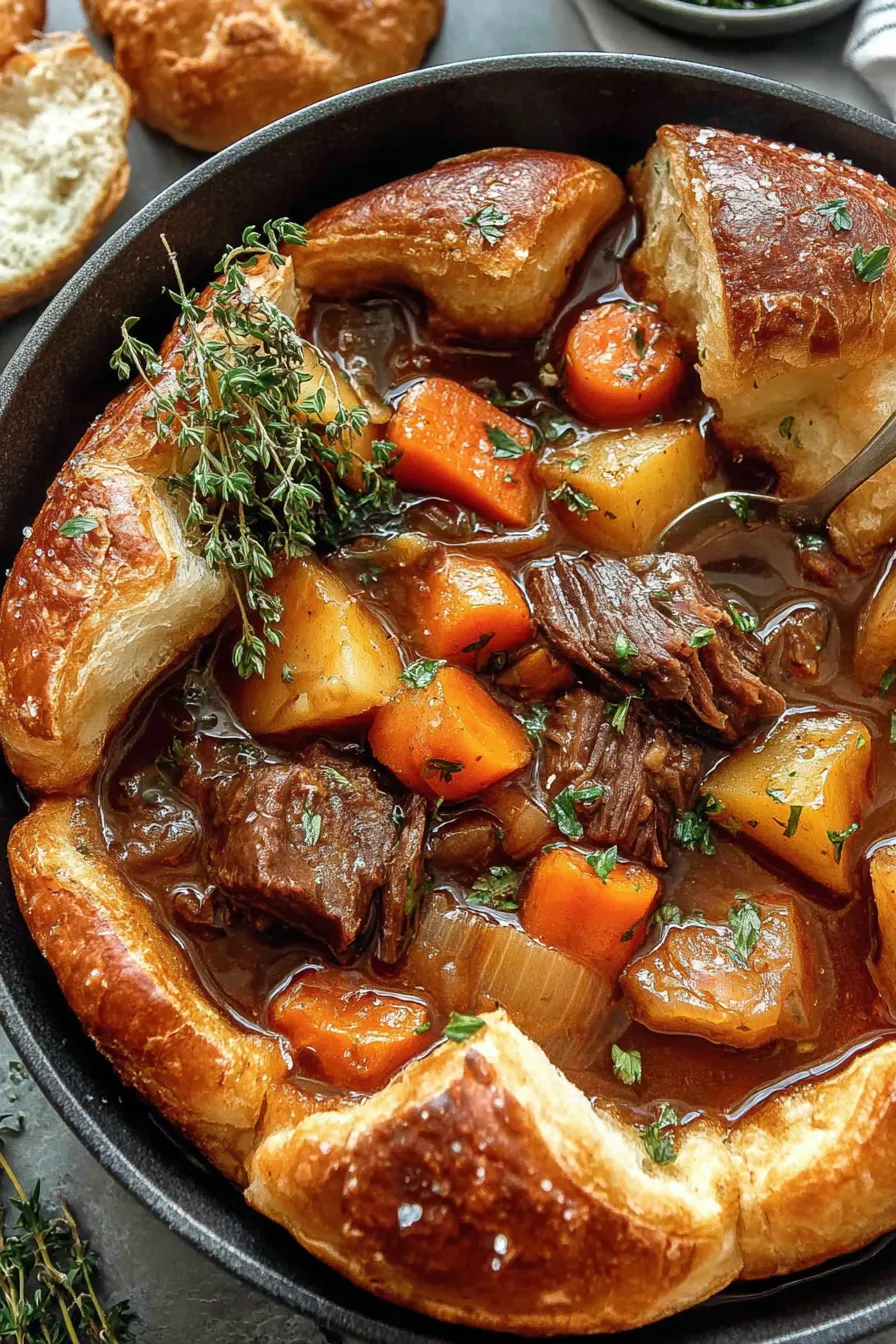
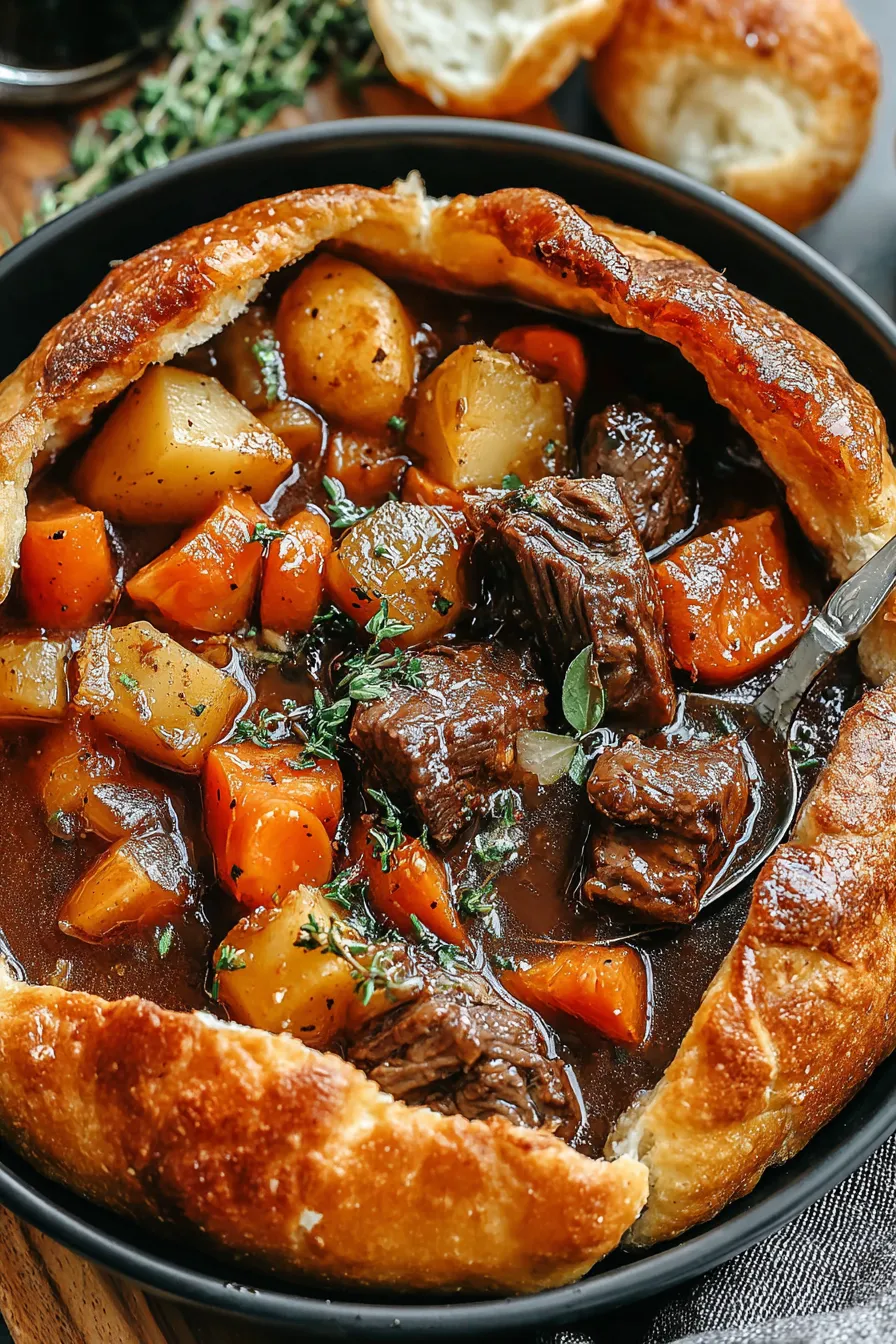
One of my favorite aspects is how forgiving this pot is: if you need to step away, the low simmer allows you to return later with improved flavor. My family often argues quietly over the last piece of bread used for a bowl — it soaks up the sauce beautifully. The theatrical element of the bread-bowl cauldron never fails to elicit delighted squeals from children and nostalgic smiles from adults.
Allow the stew to cool to near room temperature but no longer than two hours before refrigerating. Transfer to shallow airtight containers to speed cooling and refrigerate for up to four days. For longer storage, freeze in meal-sized portions in freezer-safe containers or heavy-duty zip-top bags for up to three months. Thaw overnight in the refrigerator and reheat gently on the stovetop over low heat, adding a splash of broth or water if the sauce has thickened too much. Reheated leftovers often taste even better as the flavors have melded.
If you prefer, substitute boneless short ribs or brisket for the stew meat for a richer, fattier result; adjust simmering time until fork-tender. Swap red potatoes for sweet potatoes for a slightly sweeter flavor and different nutrient profile — sweet potatoes will soften faster so add them later in the simmer. If you need a wine-free version, replace the cup of red wine with an additional cup of beef broth and a tablespoon of balsamic vinegar to approximate the acidity and depth wine provides.
Serve this stew in hollowed bread bowls for a Halloween-ready display, or spoon into deep bowls with a scattering of chopped parsley for color. Pair with a simple dressed green salad to balance richness, or crusty bread if not using bowls. For drinks, a full-bodied red wine or a malty beer complements the hearty flavors. Garnish with a dollop of crème fraîche or sour cream if you want a creamy counterpoint, or toasted pumpkin seeds for seasonal crunch.
This style of beef stew draws on classic European braising techniques where tougher cuts are cooked low and slow to transform collagen into gelatin, which enriches the sauce. The use of red wine in stews has roots in French and Mediterranean cooking; wine acts as both flavor amplifier and tenderizer. Serving stews in bread vessels has long been a rustic tradition in many cultures, where hollowed loaves double as edible bowls and reduce dishwashing during communal meals.
For an autumnal twist, add a cup of cubed butternut squash and a pinch of ground cinnamon or allspice during the last 30 minutes of cooking for warm spice notes. In winter, toss in a handful of parsnips or turnips for earthy depth. For spring or summer versions, reduce the cooking time and use fresh young carrots and new potatoes to keep a lighter texture and brighter flavor.
Make a double batch and freeze individual portions for quick weeknight dinners. Assemble all ingredients in a freezer bag (except potatoes, which hold better if added fresh) and store flat in the freezer. On cooking day, thaw overnight and proceed with browning and simmering. For lunches, portion into microwave-safe containers and reheat for 2 to 3 minutes, stirring halfway through. Use labeled containers and dates to manage freezer rotation.
There is real joy in ladling this stew into a bread bowl and watching faces light up at dinner. It’s versatile, forgiving, and comforting — a perfect dish to make your own and share around a warm table.
Pat the beef dry before browning to ensure a good sear and deeper flavor from Maillard browning.
Brown the meat in batches to avoid steaming; crowded meat will not develop a crust.
Taste and adjust salt only after the stew has reduced to avoid over-salting.
If the sauce is thin at the end, simmer uncovered to reduce; for a quicker fix, whisk 1 tablespoon cornstarch with 2 tablespoons cold water and stir in to thicken.
This nourishing witch’s cauldron beef stew recipe is sure to be a staple in your kitchen. Enjoy every moist, high protein slice — it is perfect for breakfast or as a wholesome snack any time.
Yes. Use a cup of additional beef broth plus 1 tablespoon balsamic vinegar to replace the red wine; simmer as directed.
Cool the stew, refrigerate within two hours in an airtight container for up to 4 days; freeze for up to 3 months.
This Witch’s Cauldron Beef Stew recipe makes perfectly juicy, tender, and flavorful steak every time! Serve with potatoes and a side salad for an unforgettable dinner in under 30 minutes.

Pat beef dry and brown in batches in a large pot or Dutch oven over medium heat until deeply seared on multiple sides, about 3 to 4 minutes per side. Browning builds foundational flavor.
Add chopped onion to the pot and cook until softened, about 5 minutes. Stir in minced garlic and cook for 30 seconds until fragrant, scraping up fond from the pot.
Stir in tomato paste and thyme and cook 1 to 2 minutes. Pour in 1 cup red wine and reduce by half, scraping browned bits to dissolve concentrated flavor.
Return beef to the pot. Add 2 cups beef broth, sliced carrots, cubed potatoes, and bay leaf. Bring to a boil, then lower to a gentle simmer.
Cover partially and simmer for 1.5 to 2 hours until the beef is fork-tender and the sauce is slightly thickened. Add water or broth if liquid reduces too much.
Remove the bay leaf, adjust seasoning with salt and pepper, and serve in hollowed bread bowls or deep bowls. A splash of vinegar can brighten the final flavor if desired.
Last Step: Please leave a rating and comment letting us know how you liked this recipe! This helps our business to thrive and continue providing free, high-quality recipes for you.
Leave a comment & rating below or tag
@royalmorsel on social media!


Juicy beef, sweet-charred peppers, and a silky queso drizzle turn these sliders into the ultimate crowd-pleasing bite for game day or weeknight fun.
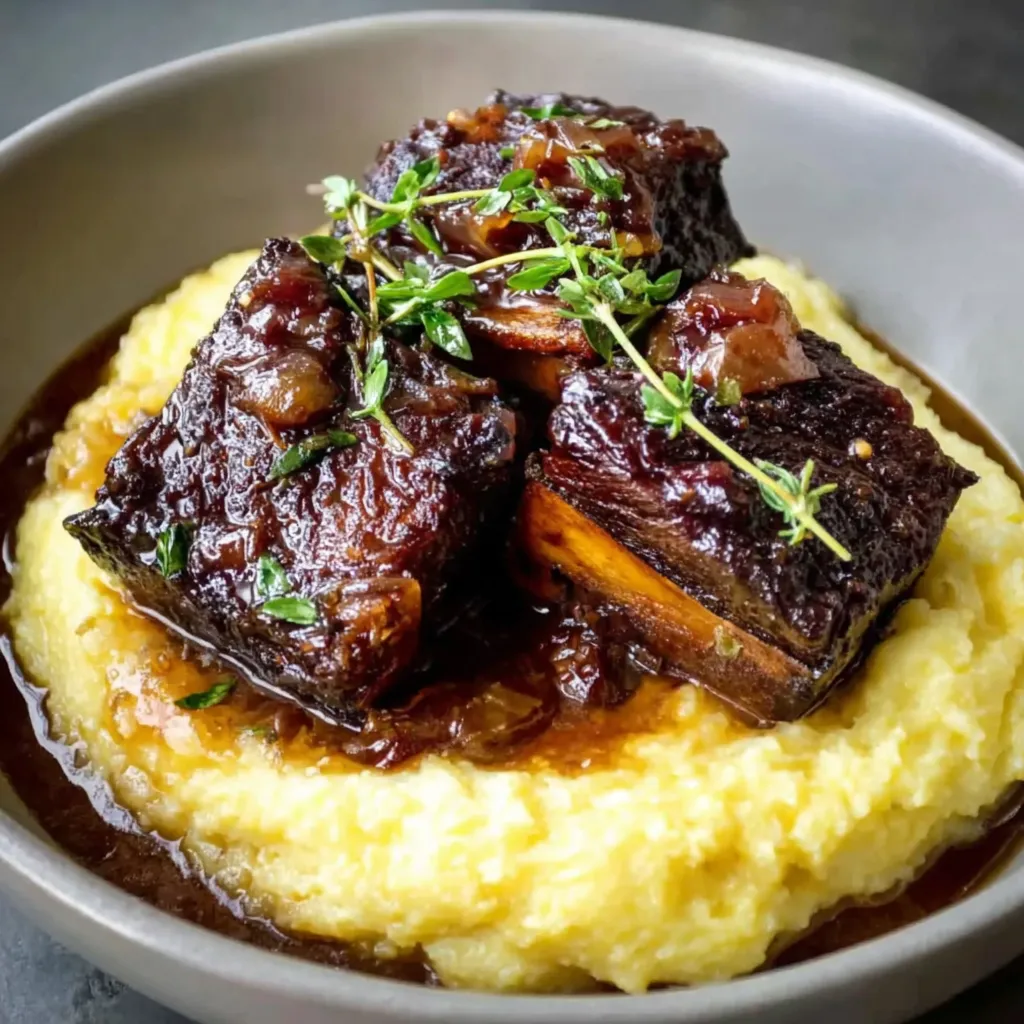
Melt-in-your-mouth braised short ribs nestled over creamy garlic mashed potatoes, all in a rich, herb-scented sauce that feels like a warm hug.
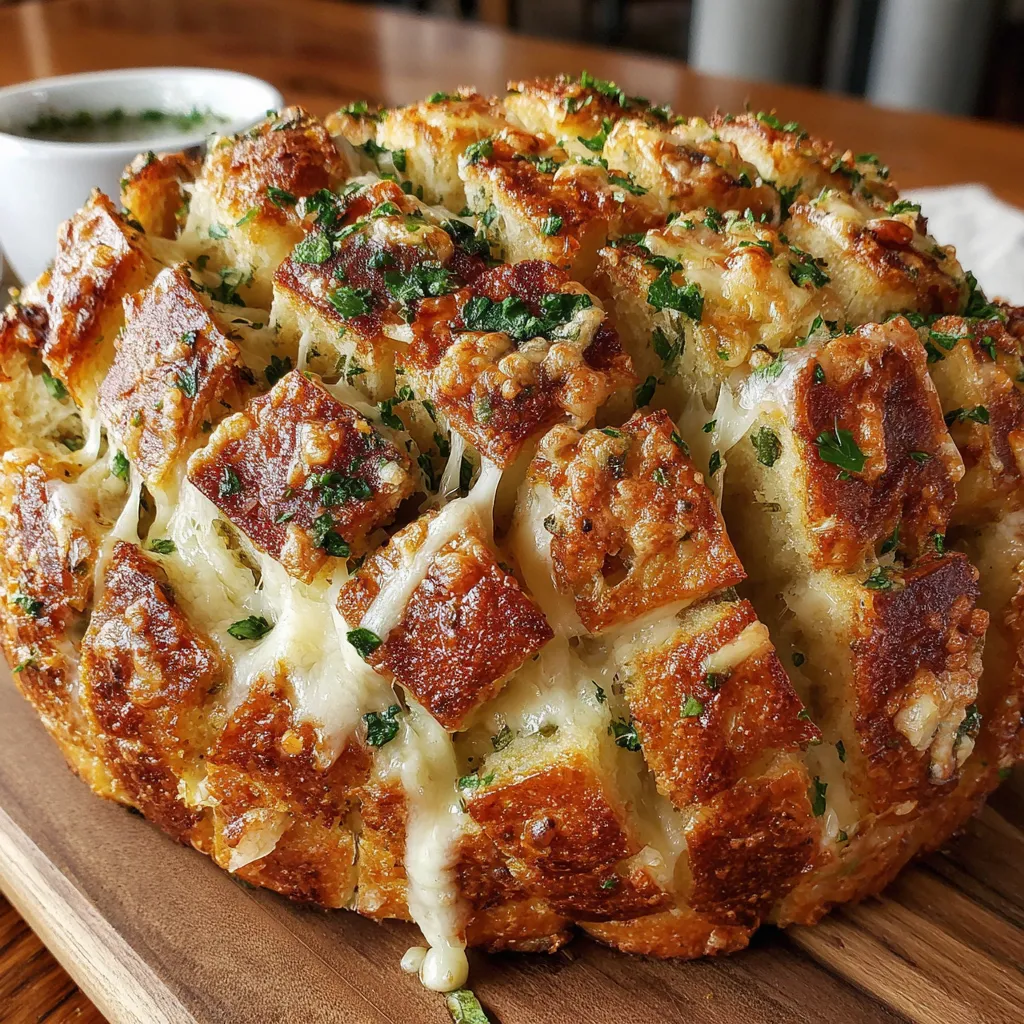
Golden, garlicky pull-apart loaf swaddled in buttery herbs and stretchy mozzarella that begs to be shared warm from the oven.

Leave a comment & rating below or tag @royalmorsel on social media!
Enjoyed this recipe? Share it with friends and family, and don't forget to leave a review!
This recipe looks amazing! Can't wait to try it.
Comments are stored locally in your browser. Server comments are displayed alongside your local comments.
Join to receive our email series which contains a round-up of some of our quick and easy family favorite recipes.